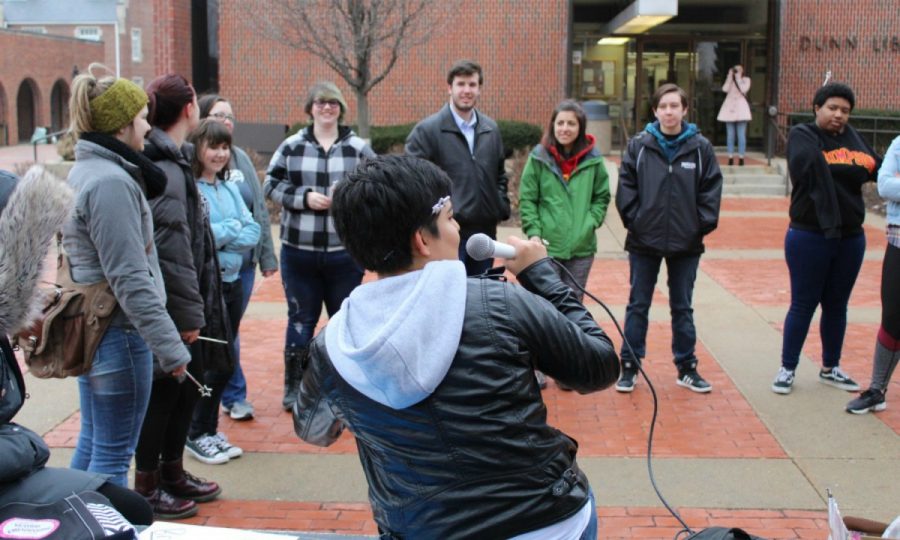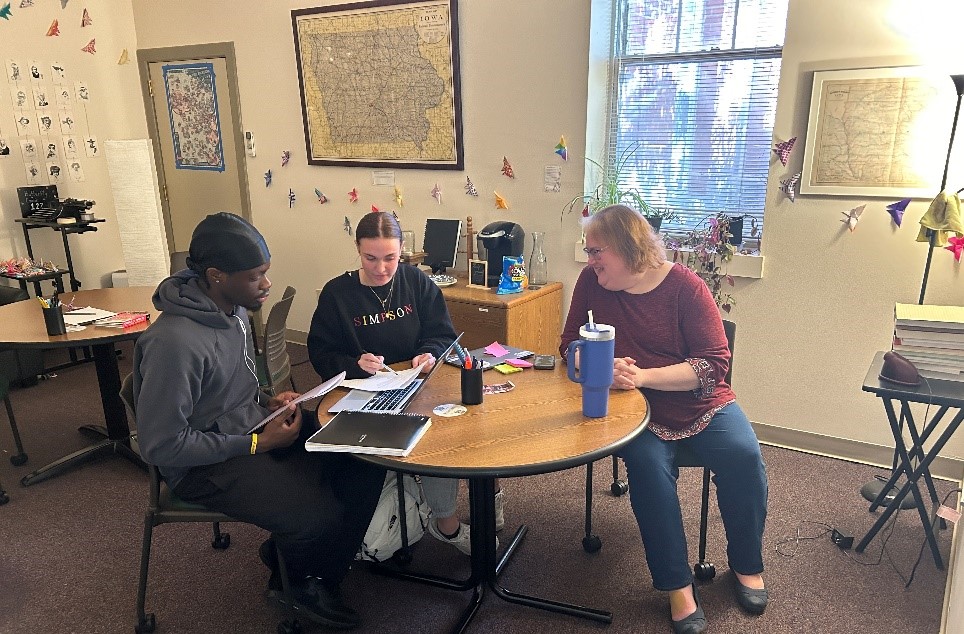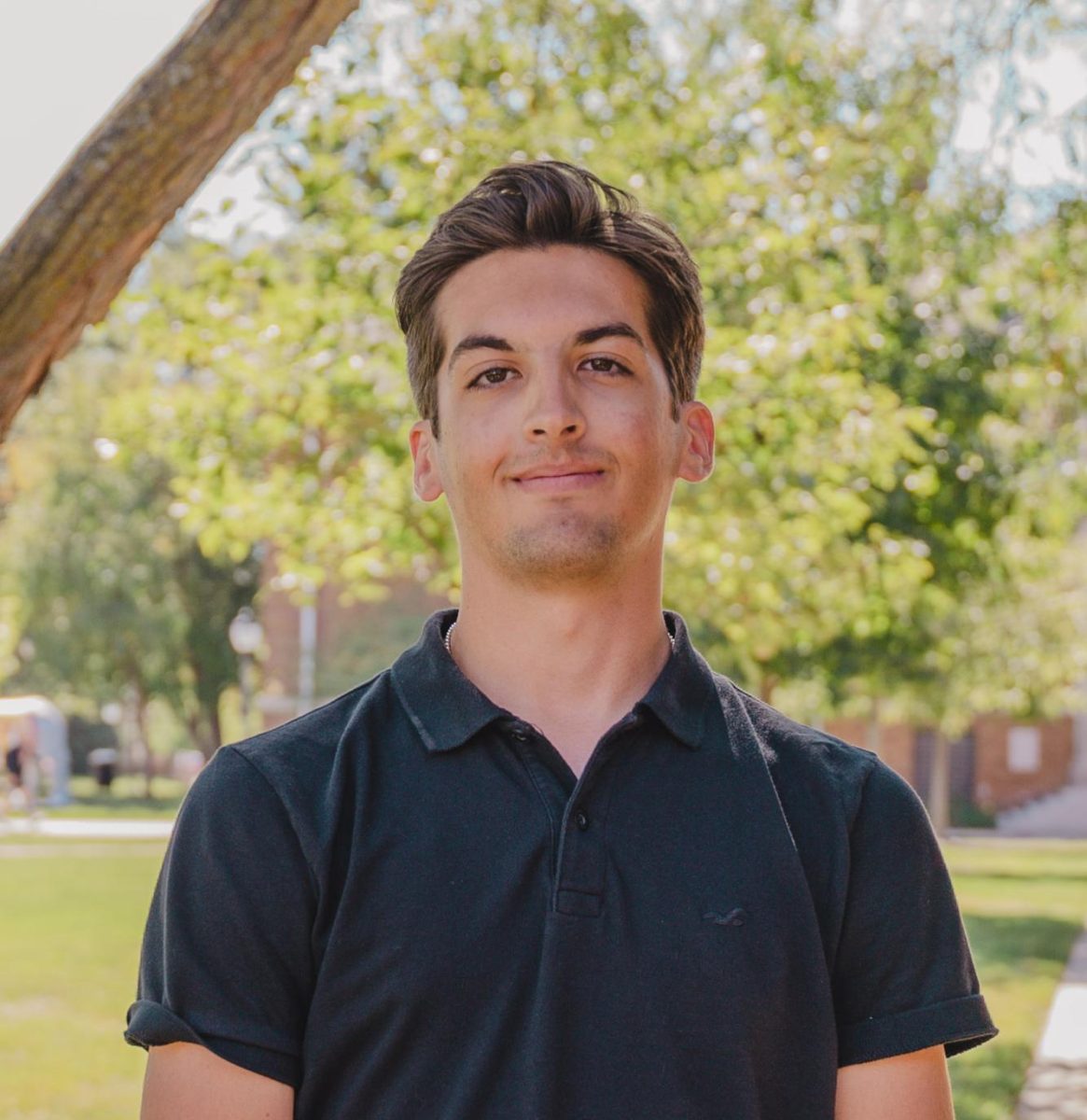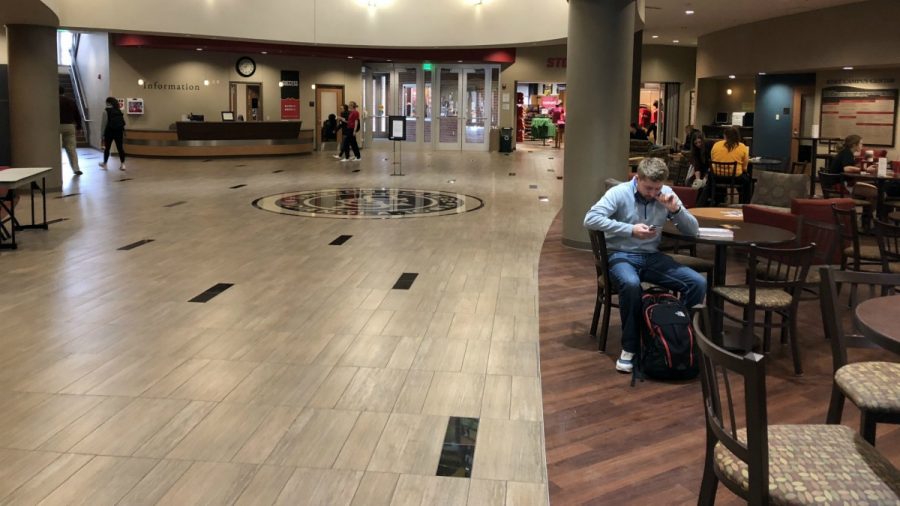Racial threat at Drake renews concerns at Simpson
Junior Natalia Rose led a protest last semester in the wake of two racial incidents which caused several students to feel unsafe on campus. Photo by Emily Carey/The Simpsonian
November 29, 2018
Simpson College President Jay Simmons sent an email to campus on Nov. 19 in response to a recent incident at Drake University where a student received a threatening note on the basis of their race.
“We must all prepare for the possibility that we are one set of pamphlets, social media posts, or robocalls away from a similar incident,” Simmons said in the email.
A similar incident occurred at Simpson last semester when Black Student Union President Linda Ramseur received a threatening note, which also contained a racial slur, on her door.
The note read, “Leave them alone or else, (N-word).”
Months after receiving the note and an investigation by the Indianola Police Department, it’s still not clear who was responsible for leaving the note at Ramseur’s door.
The note followed a few weeks after a Snapchat incident occurred on campus. Two white students who were members of Simpson’s Fraternity and Sorority Life sent a picture with a racially insensitive caption through the Apple file-sharing system, AirDrop, in the Kent Campus Center.
Infuriated, Ramseur demanded consequences be taken for their actions.
When she spoke up about the insensitivity of the Snapchat and found the note at her door weeks later, she couldn’t help but feel like the two incidents could be correlated.
“It only happened to the student who decided to speak up,” Ramseur said.
After these incidents, students were critical of the college for not being transparent with students about what had taken place and ensuring their safety on campus. Junior Natalia Rose led a group of around 50 students across campus in protest, asking for transparency from the administration.
“I think it opened eyes of the staff and made them more cautious of how they deal with things,” said sophomore Jaquelinne Mendoza.
Mendoza felt as though the protest was educational for students but that many other students do not care about such issues.
At the beginning of this academic school year, another troubling incident took place on campus. On Aug. 29, a student AirDropped a racially offensive meme to another student. That was the same day Simmons had sent an email which detailed steps the college has taken to make campus more inclusive.
In Simmons’ most recent email, he highlighted a report made by the Southern Poverty Law Center which shows hate crimes in the United States have increased by 17 percent in 2017 over the 2016 five-year high.
“We know that a number of hate groups are actively working to identify and target campuses like Simpson’s,” he said in the email.
As the social climate has shifted, Simpson has considered installing security cameras on campus. It’s a potential change that Ramseur and many other students support.
“We are actively investigating different camera options for some of our buildings and parking lots,” said Dean of Students Luke Behaunek.
He explained the college is getting different quotes from companies regarding the cost and is seeing how feasible the cameras would be for campus.
“We need to evaluate and see how expensive they are and the long term plan,” Behaunek said.
While Simpson is taking steps to create an inclusive environment for all its students, Ramseur still feels there hasn’t been much improvement since the incident in the spring.
“It hasn’t gotten better,” she said, adding that the school never fully addressed what happened to her.
“Sororities and fraternities need to be held more accountable,” she said as she remembered that the students involved in the Snapchat incident were allowed to return to their chapters. “That’s accepting the behavior and that’s not OK.”
Ramseur herself is a member of Fraternity and Sorority Life on campus and believes everyone should be held accountable for their actions. Members of Simpson’s fraternities and sororities now take part in bias and inclusivity training to help Simpson reach their goal of being a welcoming place for all.
The President’s Committee for Diversity and Inclusion has worked this semester to further improve diversity and inclusion on campus. For including focusing on providing training for students and staff and looking into creating a job for and hiring a chief of diversity.
Mendoza, who sat in on the process of hiring an assistant director of diversity and inclusion, said one candidate is Hispanic and bilingual.
“I can see the school is trying to reach out more, but sometimes it feels like a false advertisement,” Mendoza said. “Simpson needs to commit to their word. They can’t pick and choose who to be inclusive for. It’s all or nothing.”
Ramseur said part of what’s holding Simpson back is its Bias-Related Behavior Policy, which says, “bias-related behavior broadly encompasses actions that may involve the use of images, language or behaviors that directly or indirectly demonstrate hostility or contempt toward a person or group on the basis of actual or perceived identity.”
She explained there are too many loopholes, which concerns her as more minority students have enrolled at Simpson due the Simpson Promise.
In cases such as this, Ramseur wishes Simpson would better utilize its student conduct board. She also commented on how well Drake handled their current situation.
“It’s clear they value their students and their safety,” she said. “Simpson falls short when the security (Bias-Related Policy) is that weak.”
Vice President for Student Development and Planning, Heidi Levine, feels the climate on campus has improved and has faith the current Bias-Related Behavior Policy is adequate.
Simpson offers panel on diversity and inclusion during freshman orientation and continues to tweak the program to make it more beneficial to students. According to Levine, the Bias-Related Policy is “specific and highlights what is and is not allowed at Simpson.” It also includes an online report form.
“We have what we need. What we need to work on is the education side,” she said.
Last year, Simpson sent out a campus climate survey to students on campus. Most students, regardless of identity, reported feeling a sense of belonging on campus. Levine said what was concerning was students with more privilege were less likely to think about issues that challenge their perspectives. Students of marginalized groups notice the issues and their differences.
“We need to do a better job at making sure students are aware and why it matters,” Levine said.
She said she wants people to understand how the lack of thoughtfulness can lead to microaggressions, a statement, action or incident regarded as unintentional or indirect discrimination against members of marginalized groups, creating a hostile environment for others.
Walter Lain, assistant dean of multicultural and international affairs, said everyone should be aware of the incident at Drake.
“It’s disheartening, but not surprising,” he said, adding, “We should all be offended when we hear about these activities.”
Lain said he wants everyone to consider what it means to have a community at Simpson. He also encouraged students to continue to exercise their voices and not be silent when incidents such as this happen.
Simpson is a quiet, small, predominately white institution, but Simmons has factored in the possibility of what happened at Drake happening here.
“Should that day come when we must respond to an incident of hatred, let us remember Simpson’s commitment to inclusion and respond with hope, pulling one another closer, affirming one another, looking ahead, and setting aside fear,” he said in his email to campus.
He, along with Levine and Lain, mentioned the potential implementation of a bias response team on campus modeled after similar teams at other small Iowa colleges.
While this bias response team would help with quickly responding to bias related incidents on campus, Mendoza said she doesn’t think the school will see real change unless students open up their minds to be more inclusive.
To help spark such a change, Simpson has planned an event on Martin Luther King Jr. Day. The hope is to create a space for honest and open conversations in efforts to further commit everyone on campus to be more inclusive and prevent offensive incidents from occurring on campus again.
Ramseur said she doesn’t want anyone to experience what happened to her. “This could have happened to anyone. I want students to feel safe here.”
Simpson’s Bias-Related Policy is available on the school’s internal website, where students can also file a bias-related incident report.







